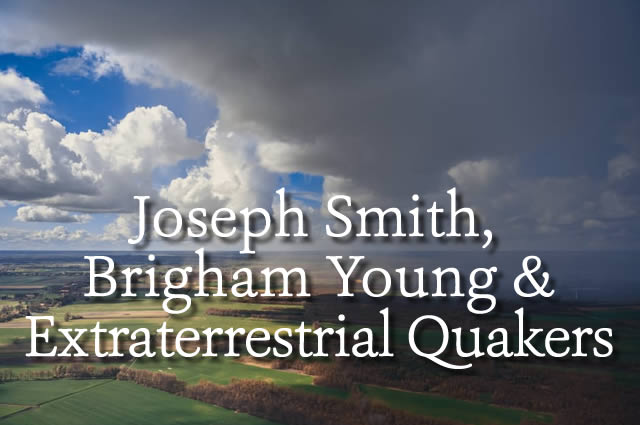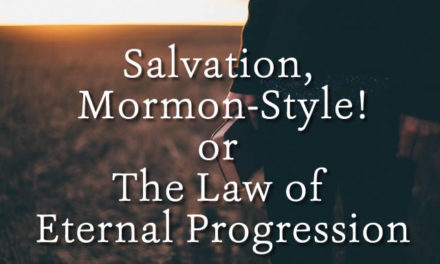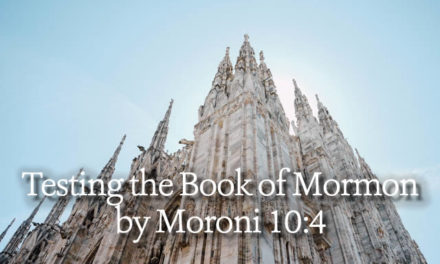On July 20, 1969 Neil Armstrong and Buzz Aldrin landed on the moon. What did they find? Was there life on the moon? Had anyone been on the moon before them? We all know that as they stepped out of their lunar module on that day, they stepped out on a barren, airless, uninhabitable wasteland; a place upon which it is impossible for man to live without special equipment.
Most Mormons living today would themselves agree with that assessment of the moon.
What about Mormons living during the time of Joseph Smith and Brigham Young? What did they believe about life on the moon?
According to Oliver B. Huntington, Joseph Smith taught that “The inhabitants of the moon are more of a uniform size than the inhabitants of the earth, being about 6 feet in height.
“They dress very much like the Quaker style and are quite general in style, or fashion of dress.”
“They live to be very old; coming generally, near a thousand years.”
“This is the description of them as given by Joseph the seer, and he could `See’ whatever he asked the father in the name of Jesus to see,” (Journal of Oliver B. Huntington, Vol. 3, p. 166; as recorded at the Utah State Historical Society).
Oliver B. Huntington wrote the proceeding statement in 1881. In 1892 he made a similar statement in the Young Woman’s Journal, a church publication: “Astronomers and philosophers have, from time almost immemorial until very recently, asserted that the moon was uninhabited, that it had no atmosphere, etc. But recent discoveries, through the means of powerful telescopes, have given scientists a doubt or two upon the old theory.
“Nearly all the great discoveries of man in the last half century have, in one way or another, either directly or indirectly, contributed to prove Joseph Smith to be a Prophet.
“As far back as 1837, I know that he said the moon was inhabited by men and women the same as this earth, and that they lived to be a greater age than we do, that they lived generally to near the age of 1000 years.
“He described the men as averaging near six feet in height, and dressing quite uniformly in something near the Quaker style.
“In my Patriarchal blessing, given by the father of Joseph the Prophet, in Kirtland, 1837, I was told that I should preach the gospel to the inhabitants of the sea — to the inhabitants of the moon, even the planet you can now behold with your eyes,” (Vol. 3, pp. 263-264).
Mormon author Van Hale, in an effort to defend Joseph Smith’s strange teaching says: “Did Joseph Smith believe in an inhabited moon? From the historical evidence now available the answer must be: Not proven,” (How Could a Prophet Believe in Moon men?; as quoted in Gilbert Scharffs’ The Truth About the Godmakers, p. 119).
Despite the previous statement, Van Hale is forced to admit that Joseph Smith believed in moon men:
“But all things considered, the possibility, or probability, that he did cannot be reasonably denied,” (Ibid).
Both Scharffs and Van Hale contend that Joseph Smith should not be held accountable for this particular belief because his contemporaries believed that there was life on the moon, too. Despite these vain attempts to show otherwise, the evidence clearly shows that Joseph Smith believed and taught that there was life on the moon.
What about Smith’s successor Brigham Young? Did he have anything to say about this matter? Indeed he did! On July 24, 1870, he made the following statement in a sermon:
“Who can tell us of the inhabitants of this little planet that shines of an evening called the moon? …when you inquire about the inhabitants of that sphere you find that the most learned are as ignorant in regard to them as the ignorant of their fellows. So it is in regard to the inhabitants of the sun. Do you think it is inhabited? I rather think it is. Do you think there is any life there? No question of it; it was not made in vain,” (Journal of Discourses, Vol. 13, p. 217).
Gilbert Scharffs, in an effort to defend Brigham Young’s statement regarding life on the sun points out that Brigham Young said, “Do you think it is inhabited? I rather think it is,” (The Truth About the Godmakers, p. 121; emphasis added).
Scharffs conveniently neglects to mention the statements which immediately follow: “Do you think there is any life there? No question of it; it was not made in vain” (Journal of Discourses, Vol. 13, p. 271; emphasis added).
It should be pointed out that the preceding statement was in the context of a sermon and that Brigham Young considered his sermons to be scripture:
“I have never yet preached a sermon and sent it out to the children of men, that they may not call Scripture. Let me have the privilege of correcting a sermon and it is as good Scripture as they deserve” (Ibid, p. 95).
The evidence is clear. Joseph Smith was not correct in teaching that there was life on the moon, Oliver Huntington never preached to the inhabitants of the moon, and all scientific evidence points to the fact that there is no life on the sun as Brigham Young claimed.
Since Joseph Smith and Brigham Young were wrong about life on the moon and the sun, does it make sense that we should trust their teachings about eternal life?
By Will Schmidt






